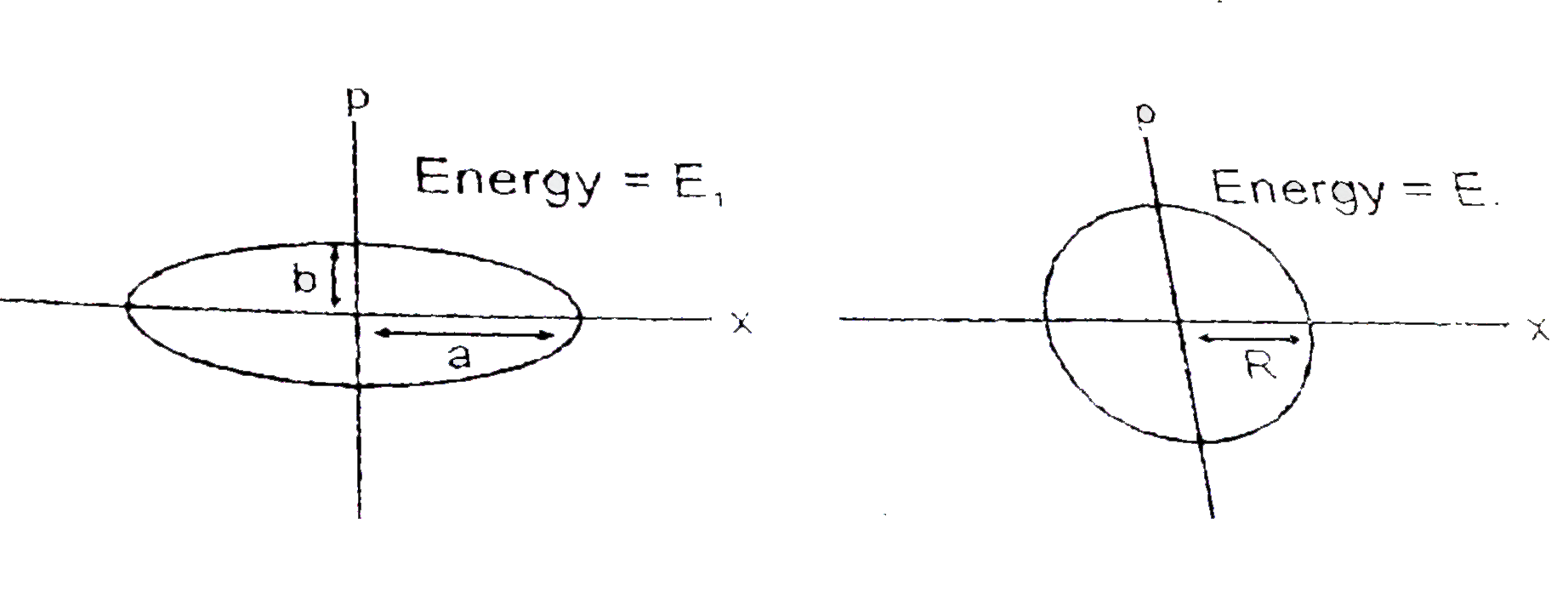Two independent harmonic oscillators of equal mass are oscillating about the origin with angular frequencies (omega_1) and (omega_2) and have total energies (E_1 and E_2), respectively. The variations of their momenta (p) with positions (x) are shown (s) is (are).
(##JMA_CHMO_C10_022_Q01##)
E1ω1=E2ω2
ω2ω1=n2
ω1ω2=n2
E1ω1=(E2)ω2
Step by step video & image solution for Two independent harmonic oscillators of equal mass are oscillating about the origin with angular frequencies (omega_1) and (omega_2) and have total energies (E_1 and E_2), respectively. The variations of their momenta (p) with positions (x) are shown (s) is (are). (##JMA_CHMO_C10_022_Q01##) by Physics experts to help you in doubts & scoring excellent marks in Class 12 exams.
Updated on:21/07/2023Topper's Solved these Questions
- JEE ADVANCEDBOOK - JEE ADVANCED PREVIOUS YEARCHAPTER - JEE ADVANCEDEXERCISE - SECTION -1
8 Videos
- JEE ADVANCEDBOOK - JEE ADVANCED PREVIOUS YEARCHAPTER - JEE ADVANCEDEXERCISE - SECTION -2
12 Videos
- JEE ADVANCEDBOOK - JEE ADVANCED PREVIOUS YEARCHAPTER - JEE ADVANCEDEXERCISE - Section-1
8 Videos
- JEE (ADVANCE) 2020BOOK - JEE ADVANCED PREVIOUS YEARCHAPTER - JEE (ADVANCE) 2020EXERCISE - SECTION 3
6 Videos
- JEE ADVANCED 2020BOOK - JEE ADVANCED PREVIOUS YEARCHAPTER - JEE ADVANCED 2020EXERCISE - SECTION-3
6 Videos
Similar Questions
The forced harmonic oscillations have equal displacement amplitude at frequencies ω1=400s−1 and ω2=600s−1. Find the resonance frequency at which the displacement amplitude is maximum.
View SolutionTwo physical pendulums perform small oscillations about the same horizontal axis with frequencies ω1 and ω2 . Their moments of inertia relative to the given axis are equal to I1 and I2 respectively. In a state of stable equilibium the pendulums were fastened rigifly together. What will be the frequency of small oscillations of the compound pendulum ?
View Solution
Knowledge Check
Two independent harmonic oscillators of equal mass are oscillating about the origin with angular frequencies ω1 and ω2 and have total energies E1 and E2 repsectively. The variations of their momenta p with positions x are shown in figures. If ab=n2 and aR=n, then the correc t equation(s) is (are) :
 AE1ω1=E2ω2Bω2ω1=n2Cω1ω2=n2DE1ω1=E2ω2
AE1ω1=E2ω2Bω2ω1=n2Cω1ω2=n2DE1ω1=E2ω2Two bodies of different masses m1 and m2 have equal momenta. Their kinetic energies E1 and E2 are in the ratio
A√m1:√m2Bm1:m2Cm2:m1Dm21:m22A particle of mass m=1kg excutes SHM about mean position O with angular frequency ω=1.0rad/s and total energy 2J. x is positive if measured towards right from O. At t=0, particle is at O and movel towards right.
 Aspeed of particle is √2m/s at x=±√2mBKinetic energy of the particle is 1J at x=±√2mCAt t=π/6 sec. particle is at x=−1mDKinetic energy is 1.5J at x=±1m
Aspeed of particle is √2m/s at x=±√2mBKinetic energy of the particle is 1J at x=±√2mCAt t=π/6 sec. particle is at x=−1mDKinetic energy is 1.5J at x=±1m
Find the angular frequency and the amplitude of harmonic oscillations of a particle if at distances x1 and x2 from the equalibrium position its velocity equald v1 and v2 respectively.
View SolutionTwo bodies of masses m and 2m have same momentum. Their respective kinetic energies E1 and E2 are in the ratio
View SolutionA particle performing SHM with angular frequency ω=5000 radian/second and amplitude A=2 cm and mass of 1 kg. Find the total energy of oscillation.
View SolutionTwo discs of moments of inertia I1 and I2 about their respective axes, rotating with angular frequencies, ω1 and ω2 respectively, are brought into contact face to face with their axes of rotation coincident. The angular frequency of the composite disc will be A.
View SolutionTwo discs of moments of inertia I1 and I2 about their respective axes , rotating with angular frequencies ω1 and ω2 respectively, are brought into contact face to face with their axes of rotation coincident. The angular frequency of the composite disc will be
View Solution
